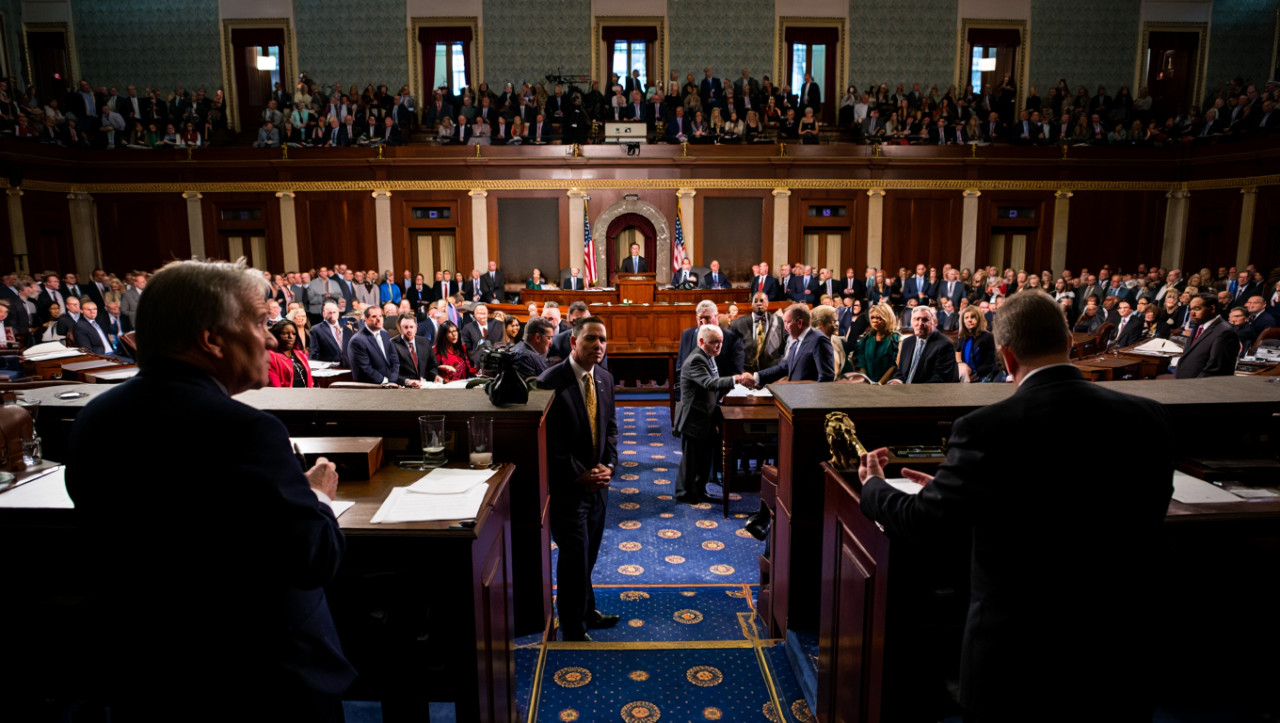Social Security Alerts, News & Updates
Biden Returns to Public Stage with Social Security Speech

Strategic Political Timing: Biden’s Calculated Return to Social Security Discourse
Former President Joe Biden’s decision to deliver his first post-presidential address at a Social Security reform conference represents a calculated political maneuver that warrants careful analysis. The selection of the Advocates, Counselors, and Representatives for the Disabled (ACRD) conference in Chicago as his reentry platform demonstrates sophisticated understanding of both policy priorities and political messaging.
The timing coincides precisely with President Trump’s deteriorating economic approval ratings, which CBS News polling indicates have declined from 51% to 44% within a single month. This seven-point drop, coupled with 54% of respondents attributing current economic conditions to Trump’s policies, creates an opportune moment for Biden to reassert his policy credentials on retirement security issues.
The Political Economy of Social Security Positioning
Biden’s strategic focus on Social Security benefits reflects astute recognition of this issue’s bipartisan resonance. ACRD Executive Director Rachel Buck’s statement emphasizing that “Americans who retire after paying into Social Security their whole lives deserve the vital support” encapsulates a message that transcends party lines. This framing positions Biden as a defender of earned benefits rather than a partisan combatant.
The conference theme of “safeguarding and strengthening Social Security for the generations to come” aligns with pressing demographic and fiscal realities. Current Social Security Administration projections indicate trust fund depletion by 2033 absent congressional intervention. Biden’s engagement with this issue allows him to contrast his approach with the current administration’s lack of concrete proposals.
Analyzing the Political Calculus
Several factors illuminate the strategic sophistication of Biden’s reemergence:
First, the venue selection—a disability advocacy conference—insulates Biden from accusations of partisan grandstanding while addressing Social Security policy concerns. Disability beneficiaries represent a particularly vulnerable constituency whose needs command broad public sympathy.
Second, the timing exploits a vulnerability window. With Trump’s economic approval underwater and 53% perceiving economic deterioration, Biden can position himself as the voice of experience on protecting retirement security. This becomes particularly potent given ongoing tariff disputes and legal challenges to Trump’s executive actions.
Third, Biden’s extended silence since leaving office amplifies this speech’s impact. The deliberate restraint demonstrated over recent months ensures maximum attention for his chosen reentry topic.
Internal Democratic Dynamics and Strategic Tensions
The reported skepticism from some Democratic operatives merits examination. The former Biden campaign adviser’s suggestion that “the country would be better served if he rode off into the sunset” reflects legitimate concerns about generational transition within the party. However, this perspective potentially underestimates the value of Biden’s institutional knowledge and credibility on Social Security issues.
Biden’s 36-year Senate tenure included extensive work on retirement security legislation. His vice presidency during the Obama administration’s navigation of Social Security solvency debates provides additional policy credibility. These credentials become particularly relevant as Democrats seek effective messengers on protecting Social Security benefits.
Policy Implications and Future Trajectory
Biden’s reengagement signals potential shifts in the Social Security debate landscape. His presence may catalyze more substantive policy discussions beyond current rhetorical positioning. Key areas likely to receive attention include:
Revenue enhancement through payroll tax cap adjustments remains the most politically viable option for addressing solvency. Biden’s previous support for applying Social Security taxes to income above $400,000 provides a concrete proposal contrast with the current administration’s absence of specifics.
Benefit protection for vulnerable populations, particularly disability recipients, aligns with the conference venue while addressing genuine policy needs. The intersection of disability and retirement benefits creates complex eligibility scenarios requiring nuanced solutions.
Intergenerational equity concerns demand sophisticated messaging. Biden must balance protecting current beneficiaries with ensuring system sustainability for younger workers—a challenge requiring both policy expertise and political skill.
Strategic Assessment and Outlook
Biden’s calculated return to public discourse through the Social Security lens represents sophisticated political strategy. By selecting an issue with broad public support and demonstrable policy expertise, he maximizes impact while minimizing partisan backlash potential.
The effectiveness of this approach will depend on several factors. Message discipline remains crucial—avoiding partisan attacks while maintaining policy focus. Coordination with current Democratic leadership ensures unified messaging rather than internal conflict. Finally, sustained engagement beyond a single speech determines whether this represents genuine policy leadership or mere political positioning.
Current polling trajectories and economic indicators suggest receptive conditions for Biden’s message. However, transforming momentary advantage into lasting policy influence requires navigating complex political dynamics. Biden’s institutional knowledge and relationships position him uniquely for this role, provided execution matches strategic conception.
The broader implications extend beyond immediate political calculations. Biden’s reemergence may signal former presidents’ evolving roles in contemporary politics, particularly on issues requiring long-term institutional memory and bipartisan credibility. Social Security’s complexity and importance make it an ideal test case for this model of post-presidential engagement.